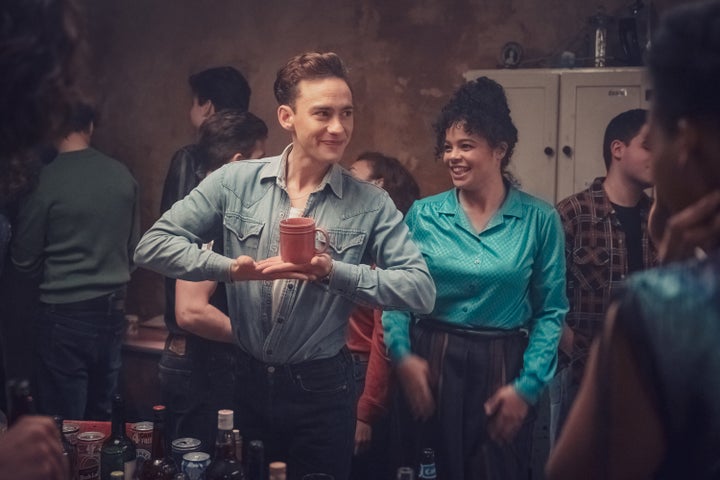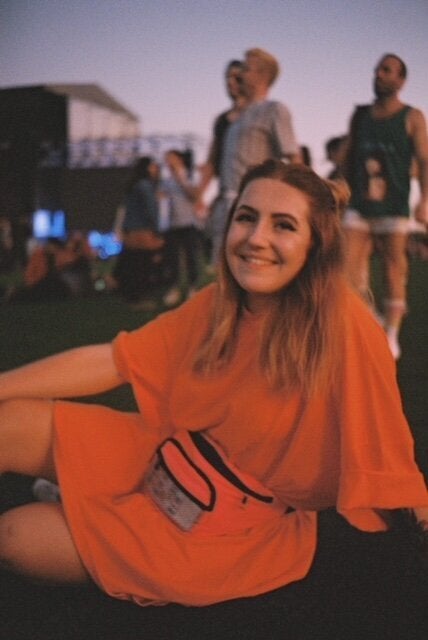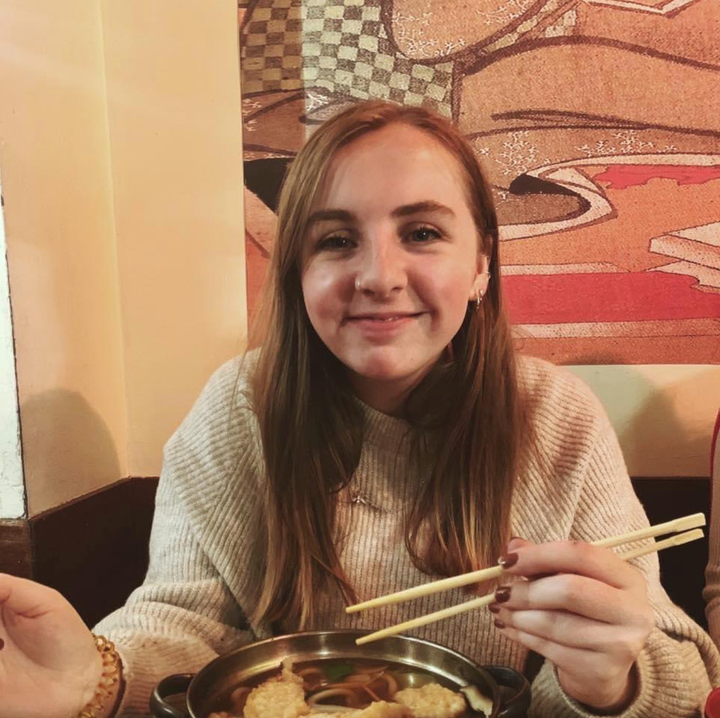
It’s estimated that around 35 million people have died from AIDS since the 1980s, but the devastating impact of the pandemic on gay and bisexual men in those early days has rarely been represented on mainstream TV – until now.
Since Russell T Davies’ It’s A Sin began airing on Channel 4, the drama has been welcomed as long overdue representation for the queer community and their allies. Alongside memories of those who lived through the period, social media feeds have been filled with younger people’s reactions to the show.
Many have been sharing their disbelief at not being taught this bit of history at school when Section 28 still forbade the ‘promotion’ of homosexuality. Others have expressed joy that Davies has written so much vivid life – not just death – into the story of the Pink Palace crew, Ritchie, Roscoe, Jill, Ash and Colin.
Global responses to It’s A Sin will continue rolling in. It’s now to be shown by HBO Europe and HBO Latin America, as well as Amazon Prime in Canada. Rights have also been secured in Australia and New Zealand.
In the UK, the show premiered to 1.9 million viewers on January 22, making it Channel 4′s biggest launch since Deadwater Fell as well as its most popular show among young people aged 16-34 in three years, according to Deadline.
So what did these millennial and Gen Z viewers make of it? These are the people who will carry the show and its messages on to the next generation – so HuffPost UK caught up with some of them to hear their thoughts.
‘It’s powerful to see these stories told in the mainstream’
Matt Horwood, 31, director of campaigns and communications, AKT charity

“For me, It’s A Sin captured the combination of fear and hatred that those living with HIV and queer men generally were experiencing at the time.
“Despite being very aware of the history of the HIV/AIDS epidemic, I still found it so powerful to see these stories told in mainstream media so delicately and yet with such intensity. Schools should take note and ensure that young people are taught in schools about the HIV/AIDS epidemic and the hate campaign it sparked against queer men in particular.
“Even in its less emotional scenes, we learned so much about the way straight people weaponised the virus against queer men: for example preventing them from applying for mortgages.”
‘We’re still talking about the issues today’
Aimee Thompson, 25, admin assistant, London

“One thing that really sticks with me after watching It’s A Sin is learning about the lengths people went to trying to prevent the spread of HIV with home remedies, vitamins and harmful substances such as battery acid. This was due to simply not knowing, or fear of approaching medical professionals and having their future careers or plans destroyed.
“I think for younger viewers, it’s a chance to not only gain an understanding of LGBTQIA+ history, but also a vital opportunity to draw parallels. We are still talking about many of the issues highlighted in It’s A Sin today, whether that’s fighting for equality in healthcare rights, stigmatisation or how to be a better ally. Progress has been made and we need to build on that. ’
‘I loved the diversity of the cast the most’
Jardel Dyal, 23, Reading

’What surprised me the most was the lack of awareness about the illness until it was too late. With the little information available, it would be deemed as hearsay and false.
“I loved the diversity of the cast the most. Everyone came from different backgrounds and all came together as their chosen family. I learned a lot on how the British public treated AIDS as the ‘Gay Plague’ and a lot of alienation from the public. A general lack of knowledge and willing to understand from the UK which unfortunately resulted in a vast amount of deaths.”
‘It feels like our history is finally worthy of a primetime slot’
Liam Bettie, 29, public affairs officer, Terrence Higgins Trust, London

“It’s a Sin is a long overdue look back at queer history that you see little, if any, mention of in school books. That was one of the most painful things about the show. These stories and these lives have gone largely unnoticed for decades.
“A single episode of It’s a Sin is more queer history lesson than most LGBT+ kids in the UK have ever got from years at school. This is our history and we deserve to be taught about it. The show is such a breath of fresh air in how unashamedly queer it is, featuring sex scenes and all the awkwardness that goes with it. It’s a real contrast with Queer As Folk which was tucked away in the television listings to a late night slot on a Tuesday.
“It’s a Sin feels like our history is finally worthy of a primetime slot on television. As a teenager I would watch episodes of Shameless that had some gay sex scenes in it, with the volume turned down, hoping my parents wouldn’t hear me. Fast forward to 2021 and I spoke at length with my mum about It’s a Sin and why it matters to LGBT people young and old.”
‘I can’t imagine how valuable this would have been for me as a teenager’
Hannah Burke, 25, press officer, East Lothian

“While I knew there was a lack of awareness and information about HIV during the AIDS epidemic, something I hadn’t appreciated until watching It’s A Sin was just how difficult it would have been to access helpful and accurate information about HIV for those looking for it. So many of us take access to the internet for granted because we’ve never really lived without it, and throughout the coronavirus pandemic, the internet has been our primary source of information (and misinformation) about the virus.
“Without this, fear and misunderstanding of the virus would undoubtably be higher, which you can see playing out in It’s A Sin – and that’s before you even consider the impact that prejudice from healthcare professionals and the mainstream media had on understanding of the virus.
“Similarly, the internet has served as a tool for so many of us to learn about our sexuality and gender. I can’t imagine how valuable it would have been for me as a teenager to not only have seen a programme like It’s A Sin on prime-time television, but also to have been able to witness and participate in the discussions it’s facilitated online afterwards.
“I think the show will mean a lot to younger people, too, because as well as highlighting the pain and the suffering of the AIDS epidemic, and the work done by queer people before us to educate people about HIV, it also shows us the resilience of the queer community, and the importance and prevalence of queer joy. The history of the LGBTQ+ community is dark at times but it is also full of joy and laughter, and it’s so refreshing to see this reflected in the show.”
‘There’s so many moments where you see the community come together’
Jeff Ingold, 29, head of media, Stonewall, London

“So often the mainstream story of the AIDS pandemic we know is told from the perspective of what happened in the US. It’s A Sin is a poignant and vital look at how this epidemic devastated the LGBT+ community in the UK. I hope younger people watching the show realise that our community stands on the shoulders of brave and fearless giants. Far too many of whom were taken from us too soon. Without them, we would never have reached the levels of equality and social acceptance that we do today.
“Despite the incredible medical progress made, there’s still a lot of stigma affecting the lives of those living with HIV. The fear, hysteria and vilification of the epidemic cast a long shadow and it can be one of the reasons why people don’t come forward to get tested. So it’s on us to use the conversation It’s A Sin is starting to educate ourselves and those around us about the realities of HIV in 2021, effective medical treatment and PrEP.
“Some of my favourite scenes were watching the characters dance their way around LGBT+ clubs and bars. For almost a year now, the Covid pandemic has robbed us of opportunities to get together as a community to dance, love and laugh as one. There is nothing quite like being in a space filled with hundreds of queer people and knowing that you’ve found your home.
“We often hear about how many gay and bi men were rejected and kicked out by their families when they disclosed their diagnosis. The storyline between Colin and Eileen shows another side. It’s not just about a mother’s enduring and unwavering love for her ailing son, but about how that relationship pushes the mother into activism and a lifetime of allyship to the LGBT+ community.”
“One of the surprising lessons was how much joy existed in the community during the epidemic. So many stories of that time focus on the dead and dying. While this obviously features heavily, there’s also so many moments where you see the community come together and find joy and levity.
‘The show led me to want to learn more’
Phoebe Close, 21, student, Swansea

“Although I was aware of the HIV crisis, I was unaware of how many people were actually impacted. I think this series did a great job of providing both entertainment and intriguing characters whilst educating about the stigma of AIDS during the 1980s and how the reaction of people was often linked to homophobia.
“Personally, this has led me to want to learn more about the both the issues then, but also how HIV and AIDS is dealt with now. I found It’s A Sin to be both funny but also a really moving and powerful series highlighting an important piece of history that seems overlooked, and something that should be talked about more.”
‘The next step is equal representation for all’
George Westwood, 22, student, Blackburn

“It’s A Sin was equally as heartbreaking as special for me. Having representation of a huge part of British history on British TV is so important. Please don’t leave your education of HIV at episode five – things have changed so much since then but we still have so much work around stigma to do.
“Some of the deaths were hard to watch. Davies allowed me to feel secure about the characters, and then out of nowhere we lost some of them. It really goes to show how brutal the epidemic was. The fact that a five episode show has taught most of the younger generation more about HIV/AIDS than schools is really telling about how much more work we still need to do.
“Every episode brought something new to the conversation and it successfully dealt with hard-hitting topics throughout. I didn’t previously know that patients were locked in hospital rooms and families of those that had died burnt their belongings. It was hard to watch in places, but those stories need to be told.
“It’s great to see HIV being represented in mainstream media as someone who is HIV+, if only it could have had this sort of representation earlier on. I would massively like to highlight though that as much as this representation is great, HIV is not a gay man’s disease. It doesn’t discriminate against sexuality or gender, and the next step is making sure that women, NB people and our trans friends get that equal representation and their voices are heard.”